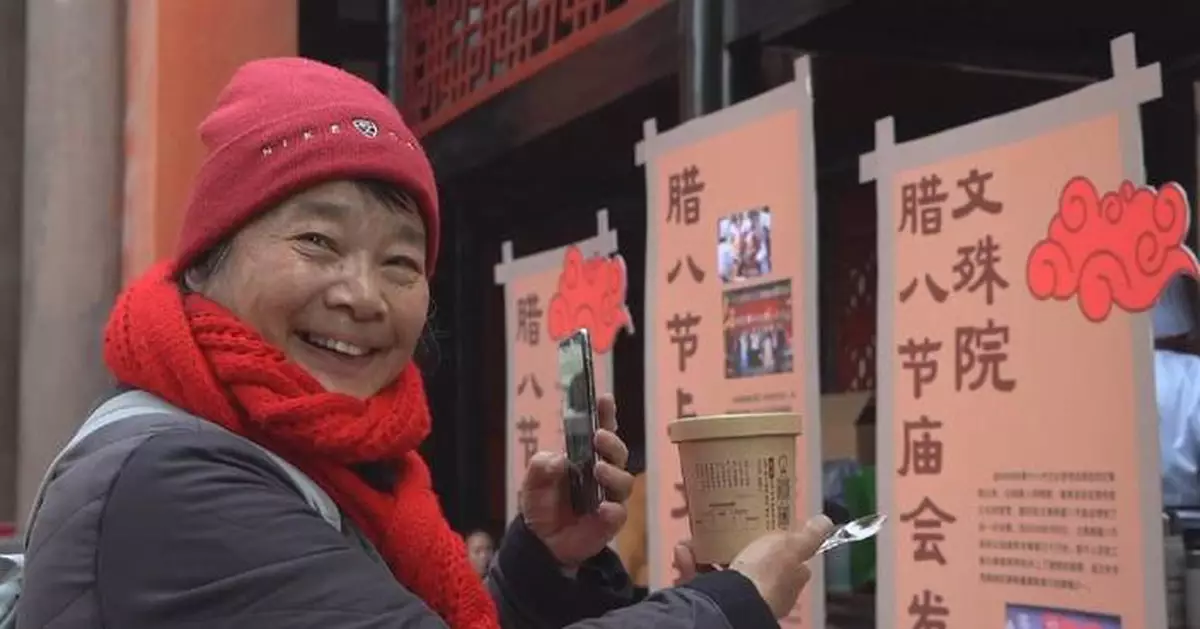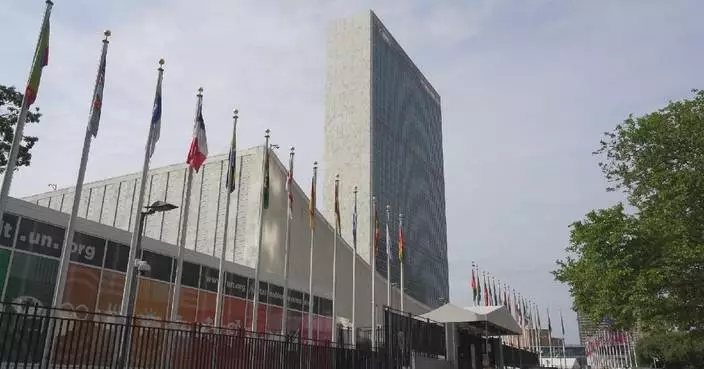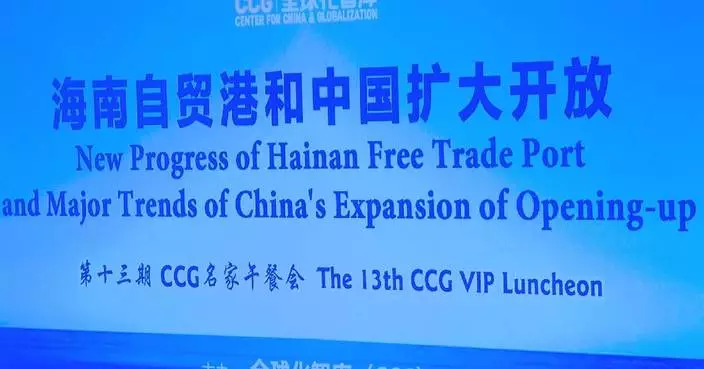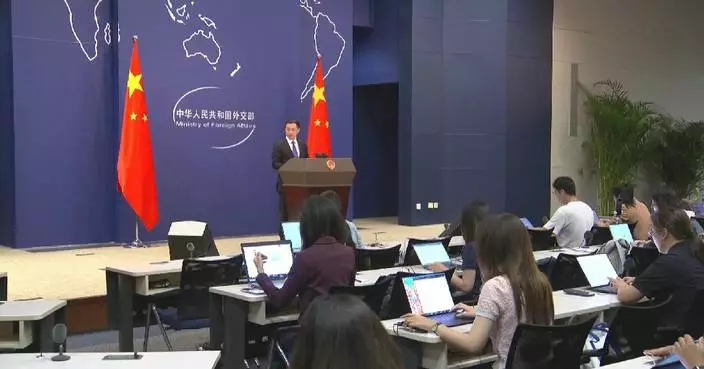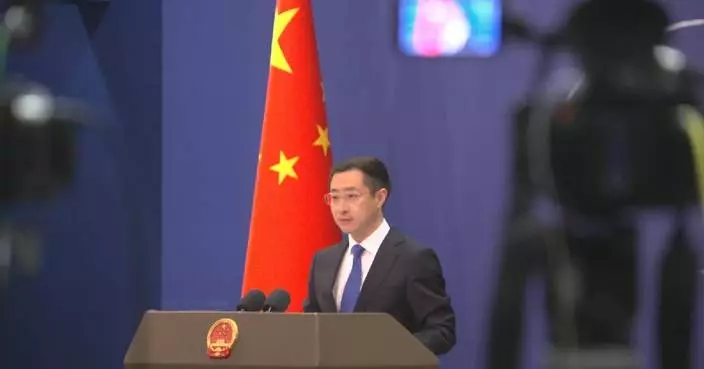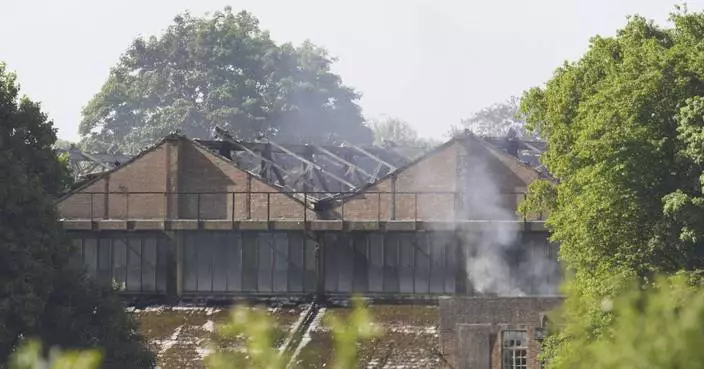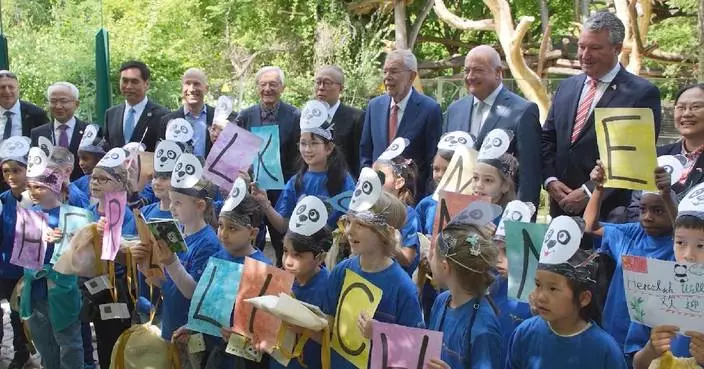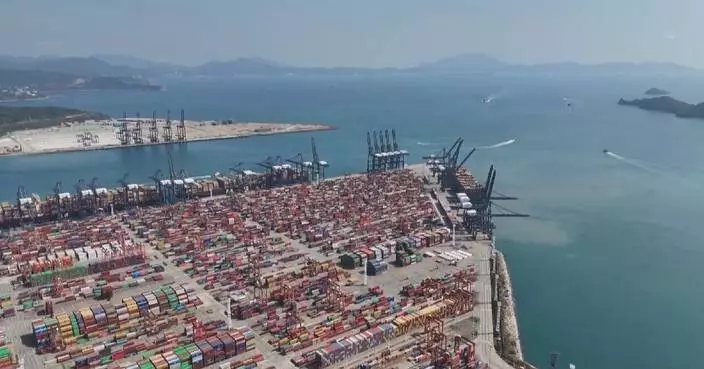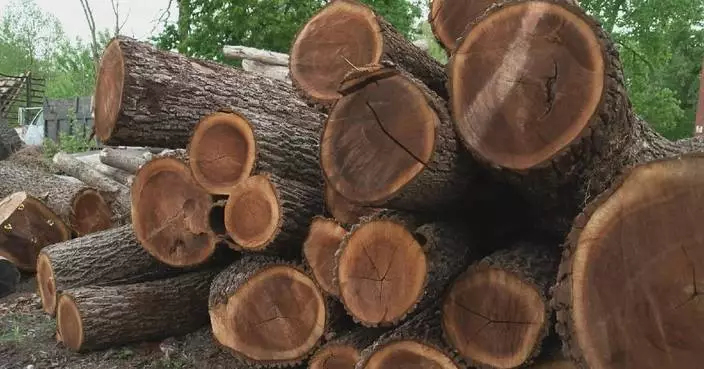Wenshu Monastery, a Buddhist temple in Chengdu City in southwest China's Sichuan Province, offered ceremonial congee to visitors on Tuesday to celebrate the traditional Laba Festival.
Falling on the eighth day of the 12th lunar month, the Laba Festival is commonly celebrated by cooking and eating congee made of at least eight ingredients like rice, red beans, peanuts, dry-dates, and lotus seeds.
Chengdu's Wenshu Monastery has a history of more than 1,000 years. This year, the temple has prepared 350,000 cups of congee for locals and tourists, served from Sunday to Tuesday.
The thick porridge is distributed for free as a symbol of good fortune for the upcoming spring.
"I didn't expect that I could celebrate the festival in the temple. But I happened to notice the temple was offering congee for free when walking on the street, so I dropped by. I feel warm after eating the congee, and everyone was lining up in a good manner, which in my opinion reflects how people greatly value this festival," said A Yishi, a tourist from southwest China's Yunnan Province.
"It's not salty at all, and it looks like oatmeal. So I think that it's not bad. Actually, we were looking for places to visit in Chengdu and this was one of the recommended ones because of the Buddhism culture. But we didn't know that there is a tradition about food and everything. So that's why we wanted to discover it even more," said Rafael Adrian, a visitor from Spain.
The Laba Festival has been widely celebrated in China since the Song Dynasty (960-1279), more than 1,000 years ago. Aside from eating congee, eating Laba garlic and a thorough house cleaning are also part of the festival's traditions.
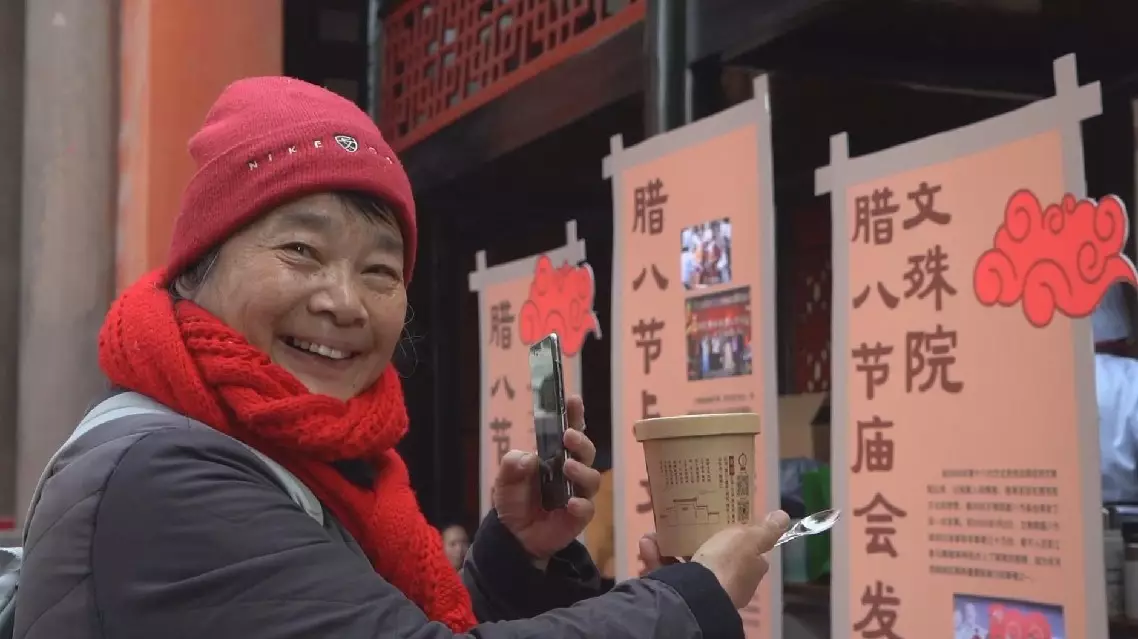
Buddhist temple in Sichuan offers ceremonial congee to celebrate traditional Laba Festival
The China-CELAC (Community of Latin American and Caribbean States) Forum is expected to bring new vitality to the global development and human civilization, said Colombian President Gustavo Petro in Beijing.
Petro, who delivered a keynote speech at the opening ceremony of the fourth ministerial meeting of the China-CELAC Forum on Wednesday, told China Media Group (CMG) in an interview, while giving a special mention of the importance of the forum as a platform to reshape multilateralism.
"This Forum, held here in China, comes at a pivotal moment in history. And that's precisely what makes it so significant. It is taking place at a time when multilateralism is in urgent need of reshaping. There are some powers who believe they can rule the world through intimidation and shows of force. But with China and Latin American and Caribbean (LAC) countries standing together, we must make them understand: history is full of hard lessons. Those who once flexed their military might did not prevail. They may have enjoyed momentary success in the past, but this time, history will not repeat itself," he said.
This year marks the 10th anniversary of the China-CELAC Forum's operation.
Chinese President Xi Jinping stated in his speech delivered at the opening ceremony of the fourth ministerial meeting of the China-CELAC Forum that under the careful cultivation of both sides over the past 10 years, the China-CELAC Forum has grown from a tender sapling into a towering tree.
Petro hailed the relations between China and LAC countries over the past decade, saying that the cooperation is expected to energize the global development and human civilization.
"Yes, exactly, a tree. A strong and thriving tree, with deep and well-developed roots firmly anchored in the earth. There's no doubt that over the past ten years, trade in physical goods between China and LAC countries has grown substantially. China is involved in building the Bogota metro project. China is also constructing a port in Peru, and many other large-scale infrastructure projects are being advanced through Chinese investment and engineering expertise. When we link the cultural and civilizational threads of China and LAC countries, it's as if we are nurturing a living tree, one that grows tall toward the sky and promises to bring new vitality to the human civilization," he said.

China-CELAC Forum brings new vitality to global development: Colombian president



